On the approach to Parcevall Hall the lanes get progressively narrower, and there are some vicious bends. The hillsides around are rather bleak, the bare limestone exposed by centuries of clearance and grazing, but occasional glimpses over the stone walls show a patch of woodland plastered against the end of the valley. Distinctive in its colours, shapes and textures, it’s obvious that this is no forestry plantation or relict ash wood.
In brief
Name Parcevall Hall Gardens. What Country-house garden. Where North Yorkshire.
Size 24 acres. Soil Alkaline loam over limestone. Climate Temperate, but the upland conditions bring higher-than-average rainfall, cooler summers and colder winters. Hardiness zone USDA 8.
When William Milner bought the largely 17th-century Parcevall Hall in 1927 it was in poor condition and stood exposed on the hillside. A man of means, Milner was heir to a baronetcy, but the ancestral house had been sold. He needed a home, and found it here.

A competent architect, Milner undertook the designs for the old hall and its surroundings himself, demonstrating considerable skill and sensitivity; the work supported many local builders and masons during difficult economic times. The old house had its back to the hillside, but the front faces almost due south down the valley of the Skyreholme Beck. Below the house Milner created a series of terraces within high walls to catch every ray of sunshine possible. This sequence remains the heart of the garden, beautifully crafted in local stone in a sort of ‘muscular Arts and Crafts’ style, and its elegant ruggedness is entirely appropriate for the majestic setting. The stonework is supplemented by tight hedging, adding another layer of shelter.
Beyond the terraces more walls and buildings define attractive spaces – the Chapel Garden, and a Rose Garden with fine gates and exquisite summerhouse. But Milner knew where formality had to stop. The Rock Garden is shaped into the living limestone, and above it the Cliff Walk leads through wildflowers to a viewpoint overlooking the spectacular scenery of Toller’s Gill, once, now almost unimaginably, the site of extensive lead mining. The water for garden and community flows from the mouth of an old lead mine.
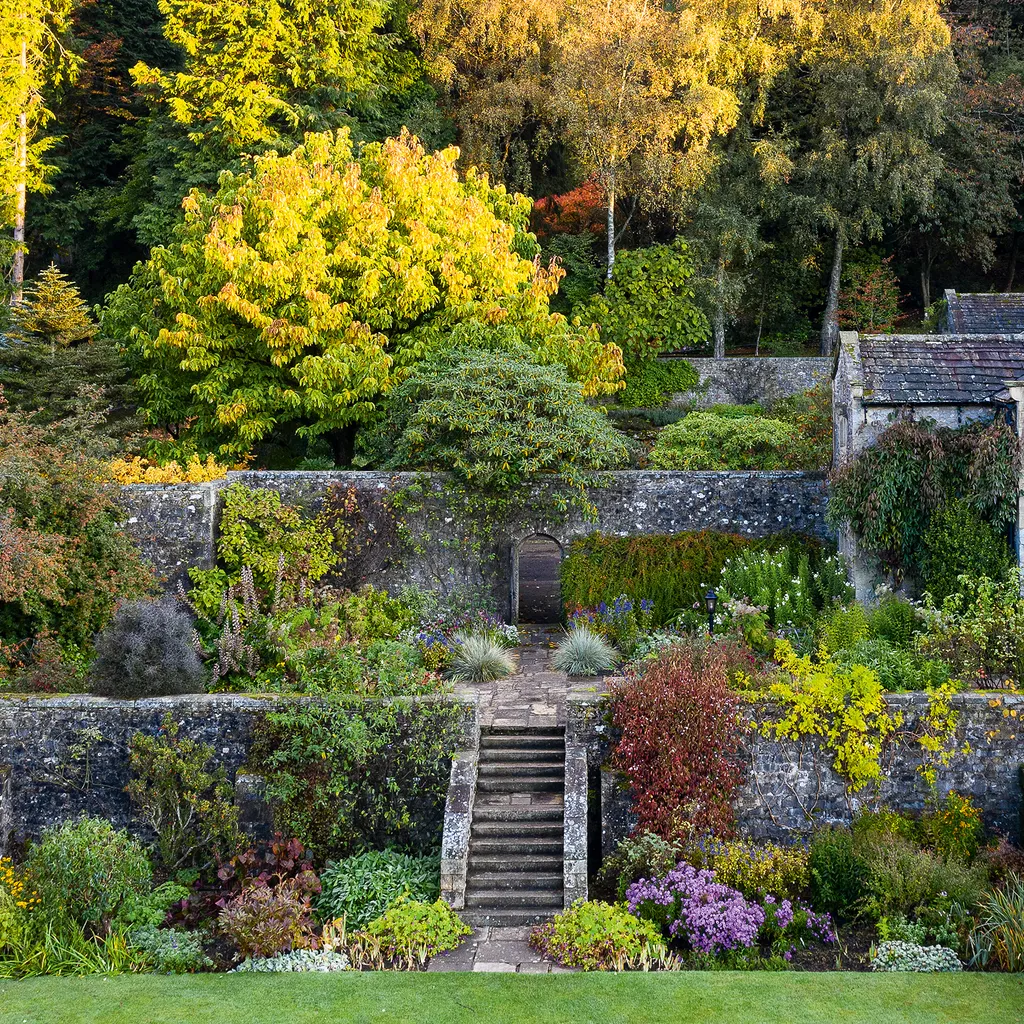
Shelter is the critical need here at around 210m, and a belt of robustly hardy trees to surround the 24-acre garden site must have been an early planting. The central garden space was also generously – Phill Nelson, the head gardener, would say “far too densely” – planted with a range of conifers and deciduous trees, giving that richness of effect seen on arrival. Described as a gentle giant, standing at six feet, seven inches, a devout Christian and naturally somewhat reticent, Sir William Milner was nevertheless extremely well connected. Queen Mary was his godmother and he had no trouble procuring good plants, many of which had been newly introduced from China, from his friends. Carefully planted and left to their own devices, the new specimens flourished; a survey by the Tree Register in 2021 recorded 14 county or national champion trees in the garden. One is a magnificent paperbark maple (Acer griseum), by far the tallest in North Yorkshire at 12.5m, and its girth of almost 2m makes it the stoutest in England. Always beautiful, its autumn reds and coppers show up to great effect in front of the gold of the nearby katsura (Cercidiphyllum japonicum).
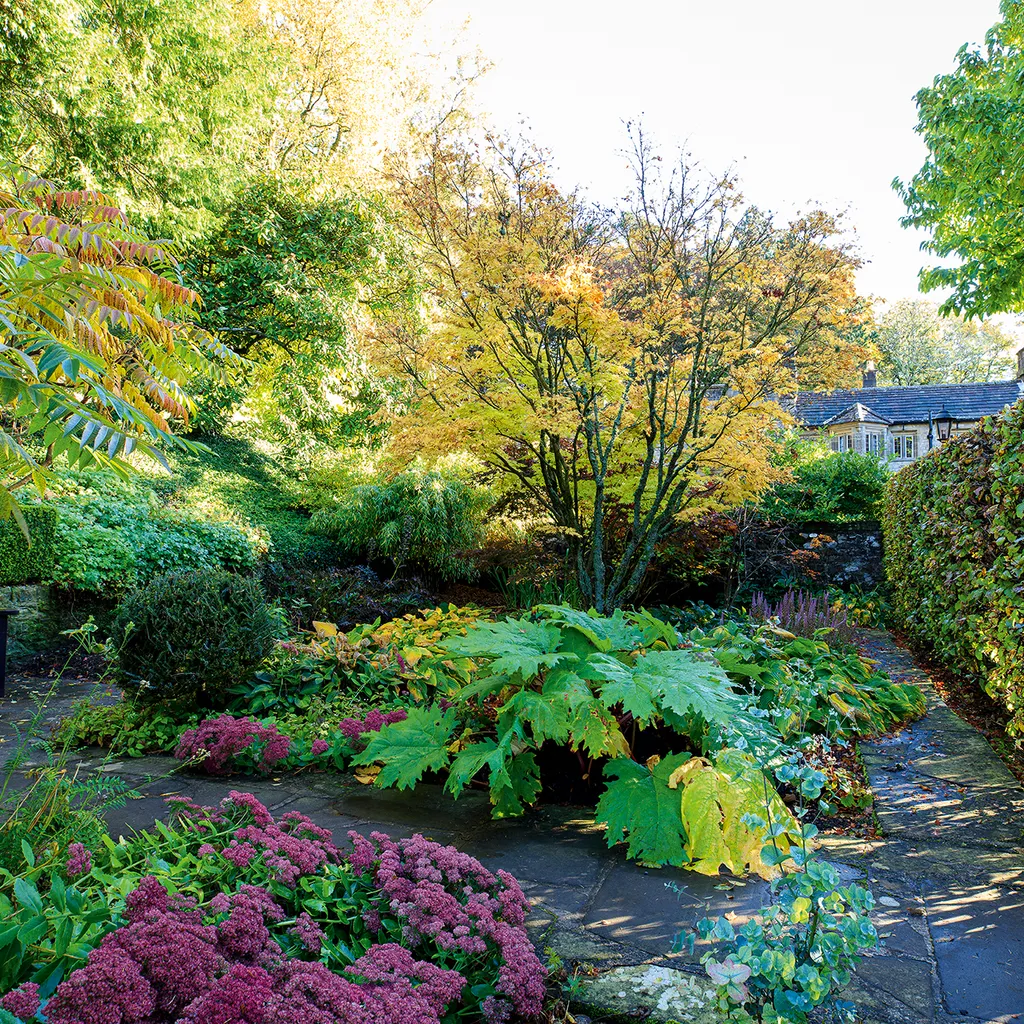
How Sir William thought the garden would look once the shelterbelt grew up is unknown, but the change is illustrated by a tale told by Phill: an old woman who had known the (more exposed) garden in her youth was brought to visit, but refused to believe she was at Parcevall Hall, so completely changed was the landscape. Phill has been head gardener for 32 years and has been largely responsible for the garden’s reclamation from 25 years of neglect following Milner’s death in 1960. “We just do a bit when we can,” he says, showing a pool and waterfall rescued from oblivion some years ago, “but now we need to dredge it again.” The budget is tenuous but is made to go a long way by the dedication, hard work and horticultural intelligence of Phill and his assistant Nick Smith, who has himself been at Parcevall Hall for 22 years.
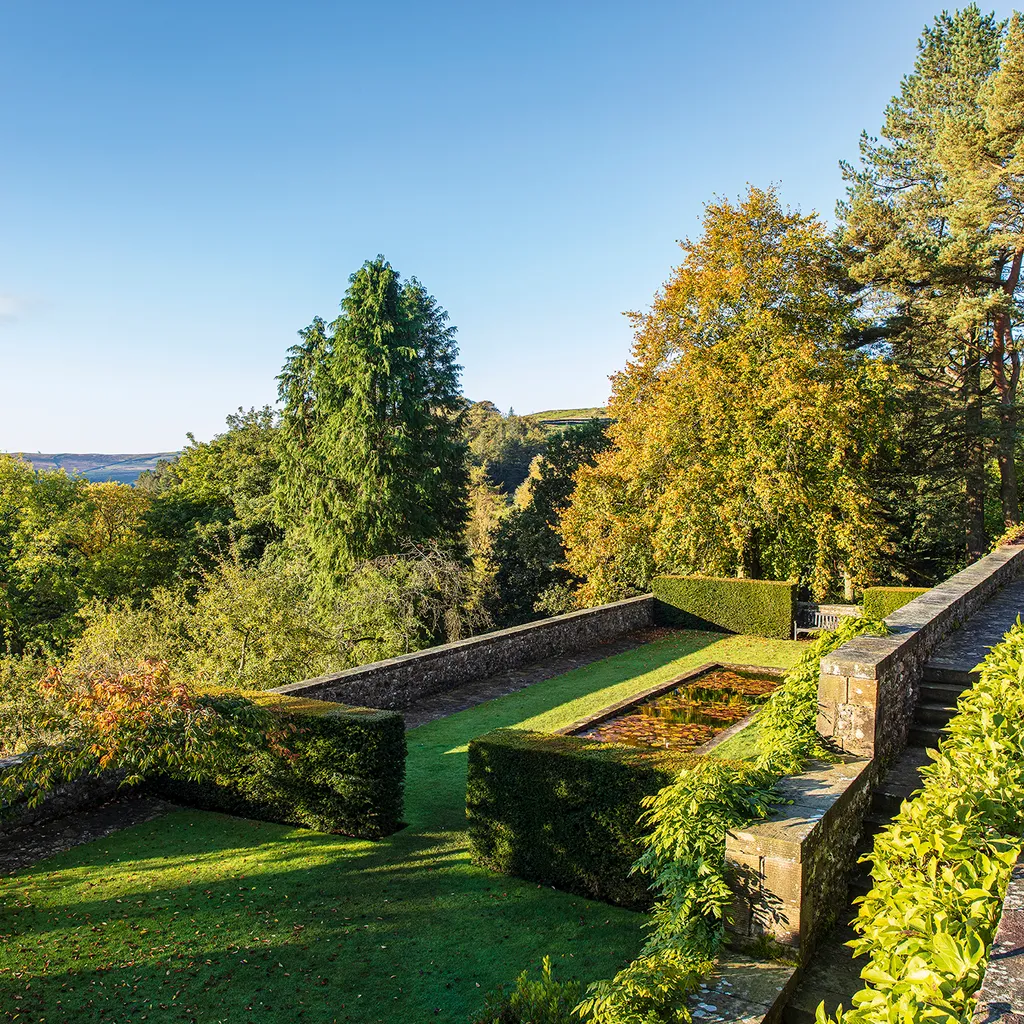
It is unusual to see a garden so immaculately maintained by just two men – the terrace lawns velvety, hedges precision-clipped and shrubs perfectly trained to the walls, offsetting a fine selection of perennials chosen for their seasonal highlights. Although the revenue from more visitors would be welcome, the fewer than 10,000 who reach Parcevall each year leave a light footprint.

Winter can be dark, with the sun only making it over the high ridge to the east by late morning, but in spring the garden is full of daffodils and other bulbs, transitioning into summer richness exemplified by the fragrance of the rose garden. By late summer and into the autumn, the Red Borders stretching below the terraces reach their peak, and on the terraces long beds of Nerine bowdenii, agapanthus and hardy fuchsias provide continued floral colour as the season fades. Beyond the garden the hillsides change colour yet again, summer purple heather fading to bronze bracken and yellow birch, the whole flaring into brilliance as the setting sun lights up the crags of nearby outcrop Simon’s Seat.
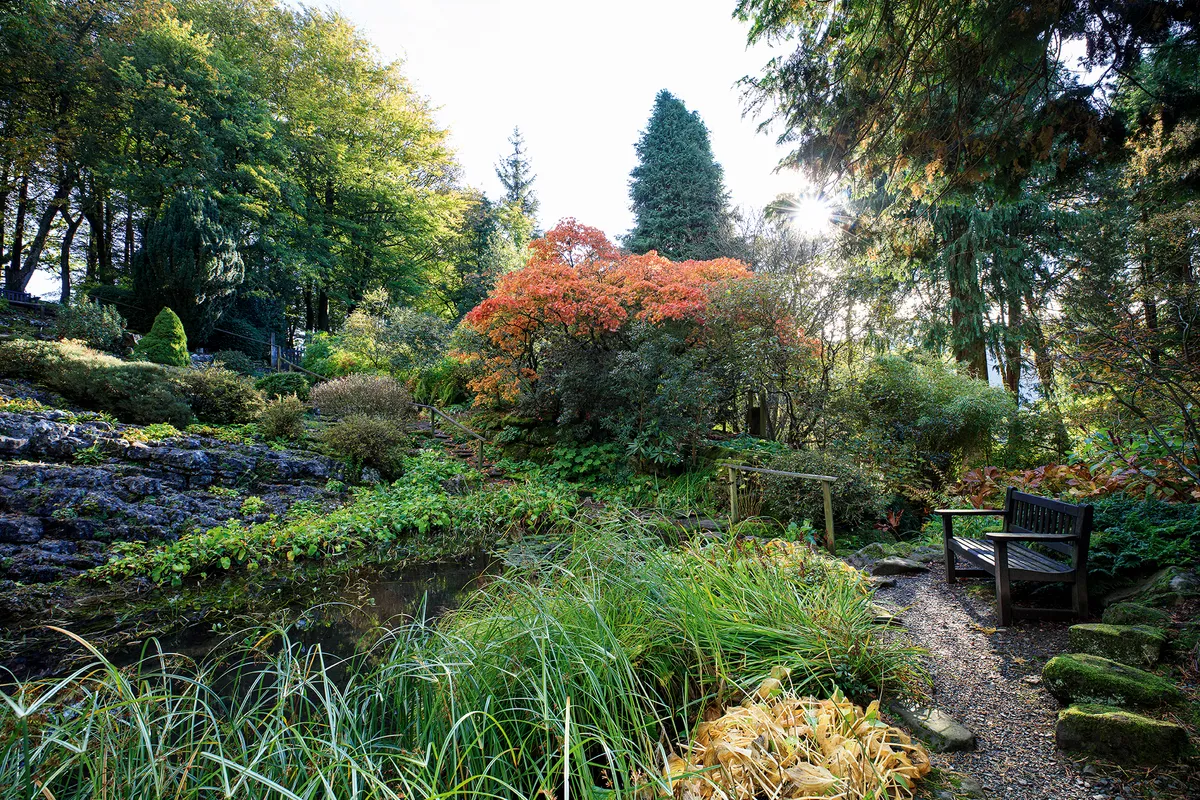
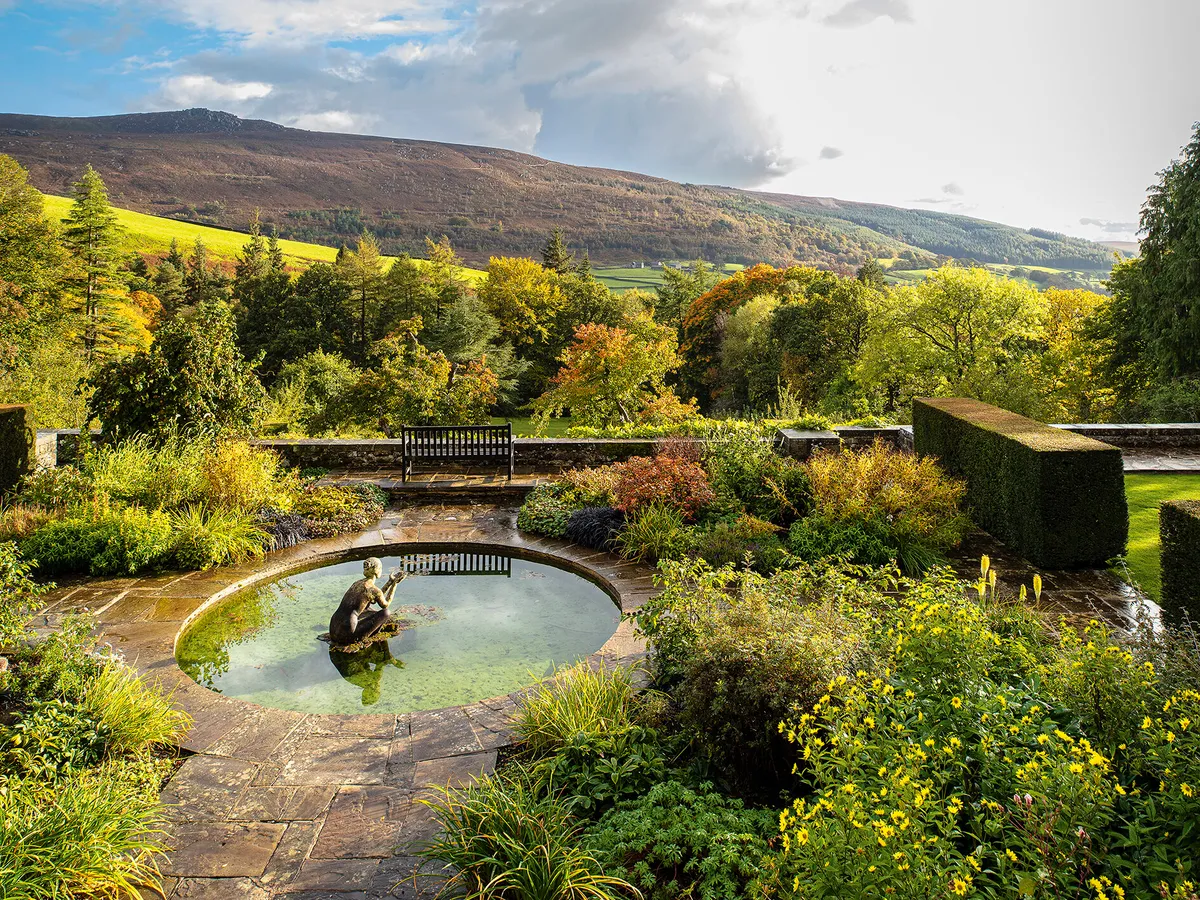
USEFUL INFORMATION
Address Parcevall Hall, Skyreholme, nr Appletreewick, North Yorkshire BD23 6DE. Tel 01756 720311. Web parcevallhallgardens.co.uk Open The garden is open daily from 1 April to 31 October, 10am-6pm (last admittance 4pm). Parcevall Hall itself is closed to the public and used is a retreat house for the Diocese of Leeds.
12 key plants from Parcevall Hall
Gentiana asclepiadea
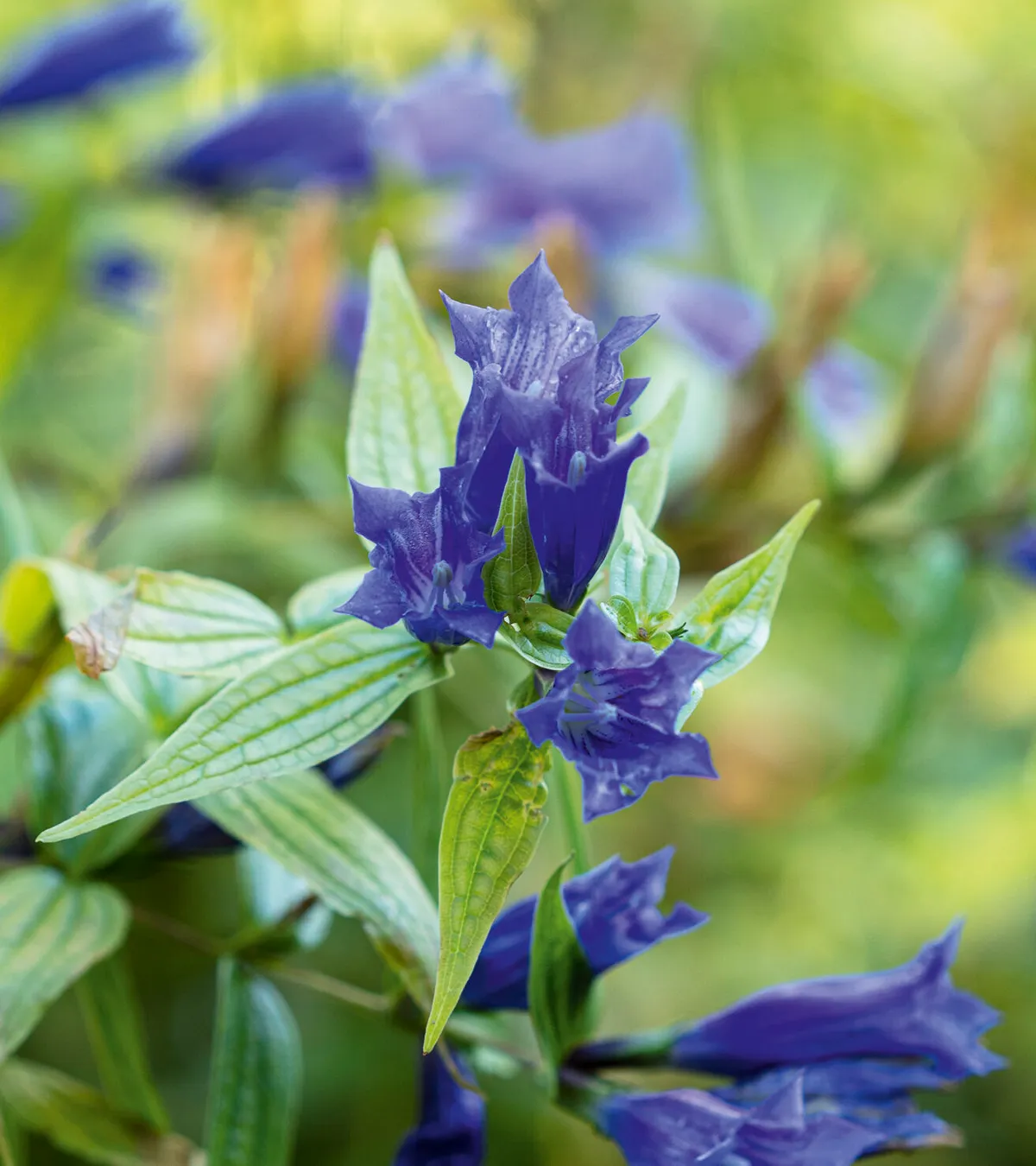
Willow gentian gets its name from its arching shoots, which carry bright-blue bells late into the season. Thrives in moist soil and light shade. 50-80cm. AGM*. RHS H5†.
Euonymus alatus
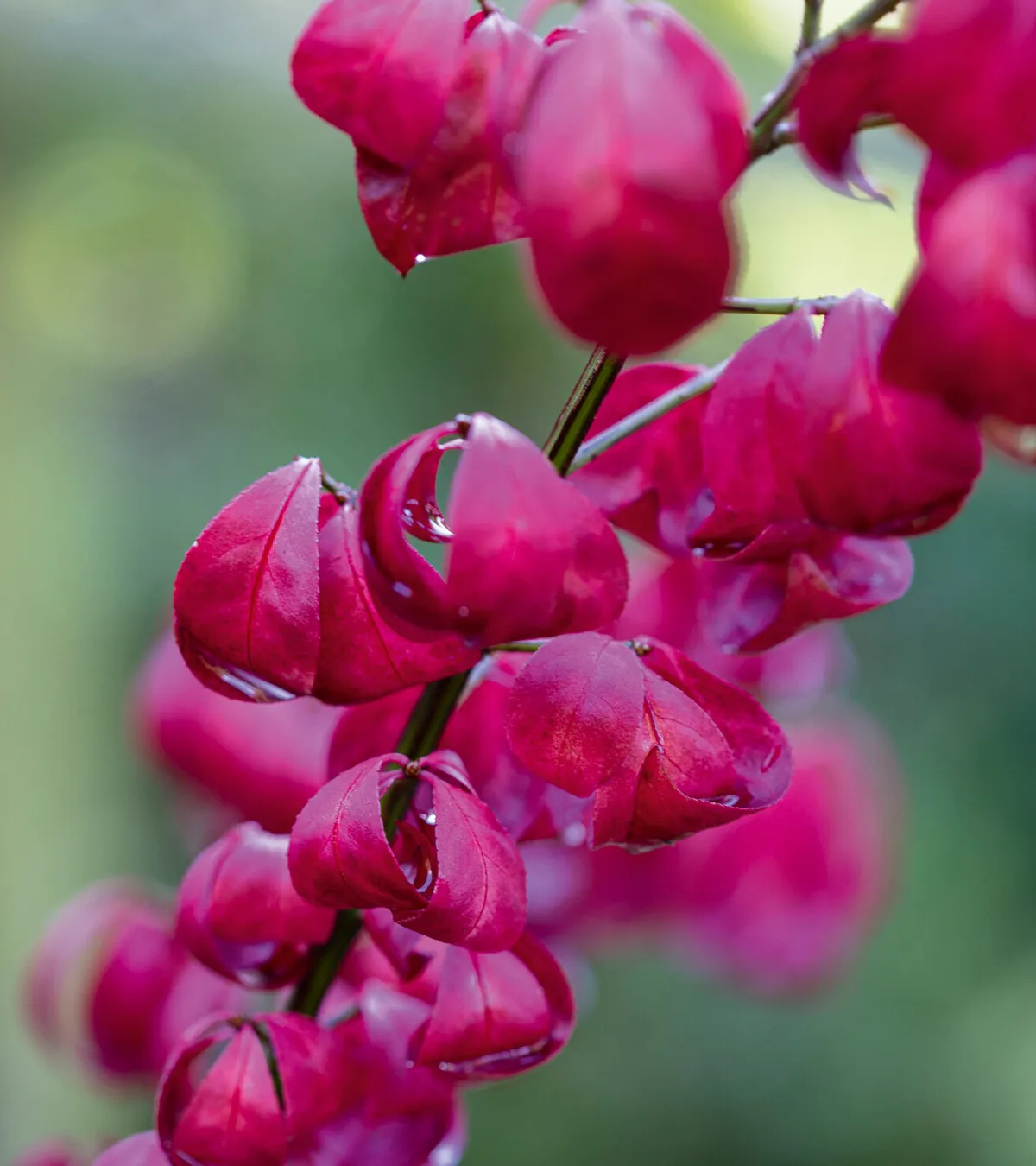
Provides some of the brightest and most reliable autumn reds, especially in full sun, on a compact shrub. 1.5m. RHS H6, USDA 4a-8b.
Monarda ‘Cambridge Scarlet’

A long season of bright-red flowers makes this a really useful component of the Red Borders at Parcevall Hall, spreading gently to form a healthy clump. 1.2m. RHS H4.
Hylotelephium spectabile ‘Brilliant’

Dense clumps of fleshy shoots bear flat heads of chalky pink flowers beloved by late bees and butterflies. Best in full sun. 40cm. AGM. RHS H7, USDA 3a-9b.
Miscanthus sinensis ‘Kleine Fontäne’

One of the smaller clones, with lovely, silver-veined leaves and reddish plumes that become silvery as they age. 1-1.5m. AGM. RHS H6.
Kniphofia ‘Nancy’s Red’
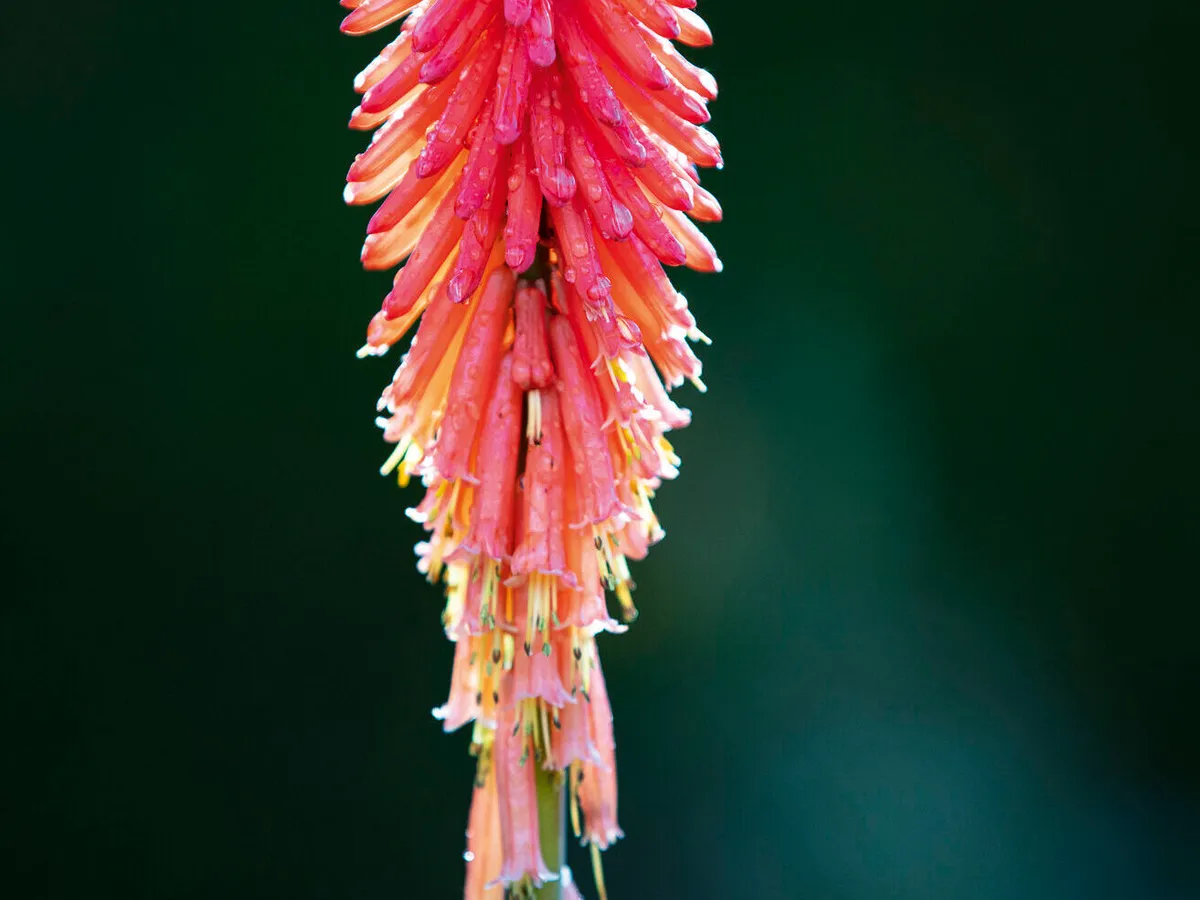
A useful, tall, late poker, with coral-red flowers from late summer into autumn above quite narrow leaves. 70-90cm. RHS H5, USDA 6a-9b.
Kniphofia ‘Percy’s Pride’
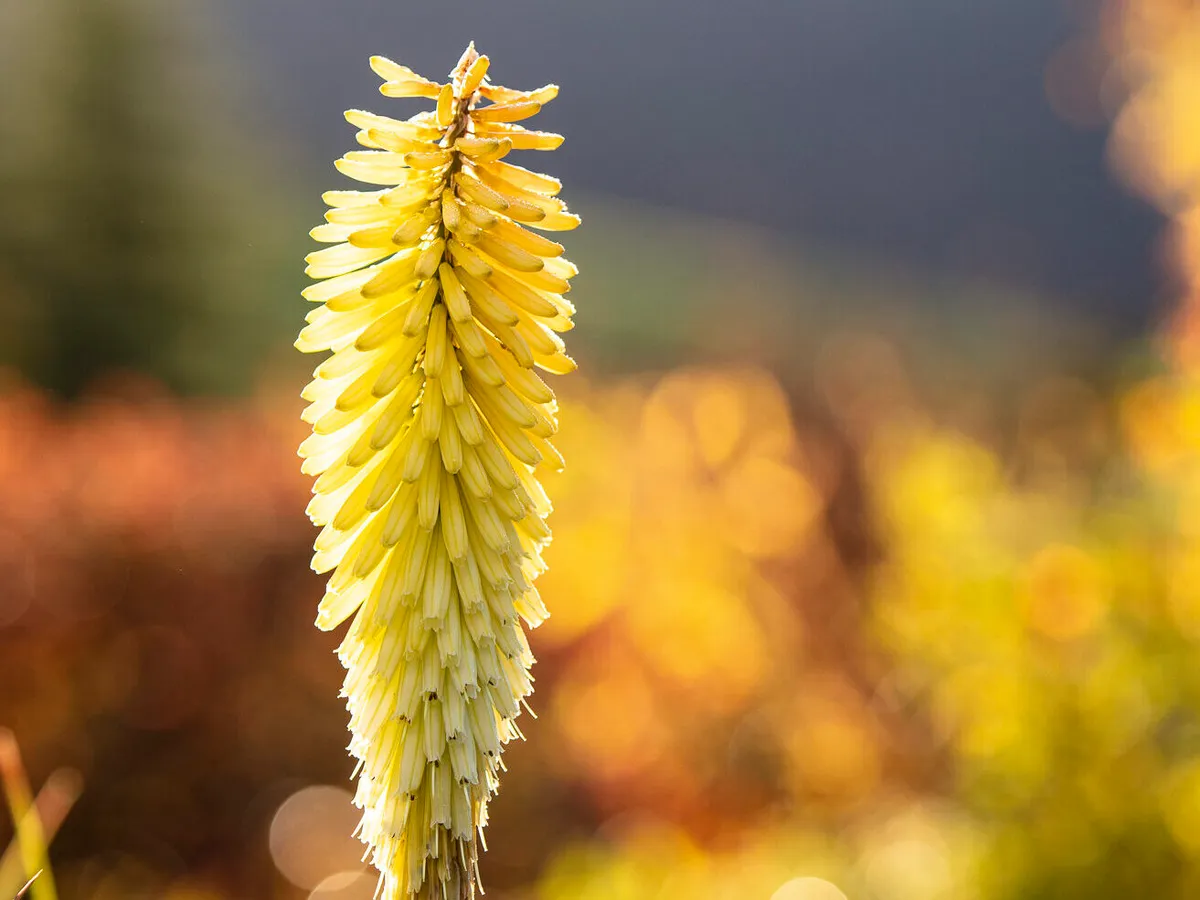
An autumn stalwart, usually at its best in September, producing abundant spikes of lemon-yellow flowers from solid clumps. 75cm. RHS H5.
Helianthus ‘Lemon Queen’
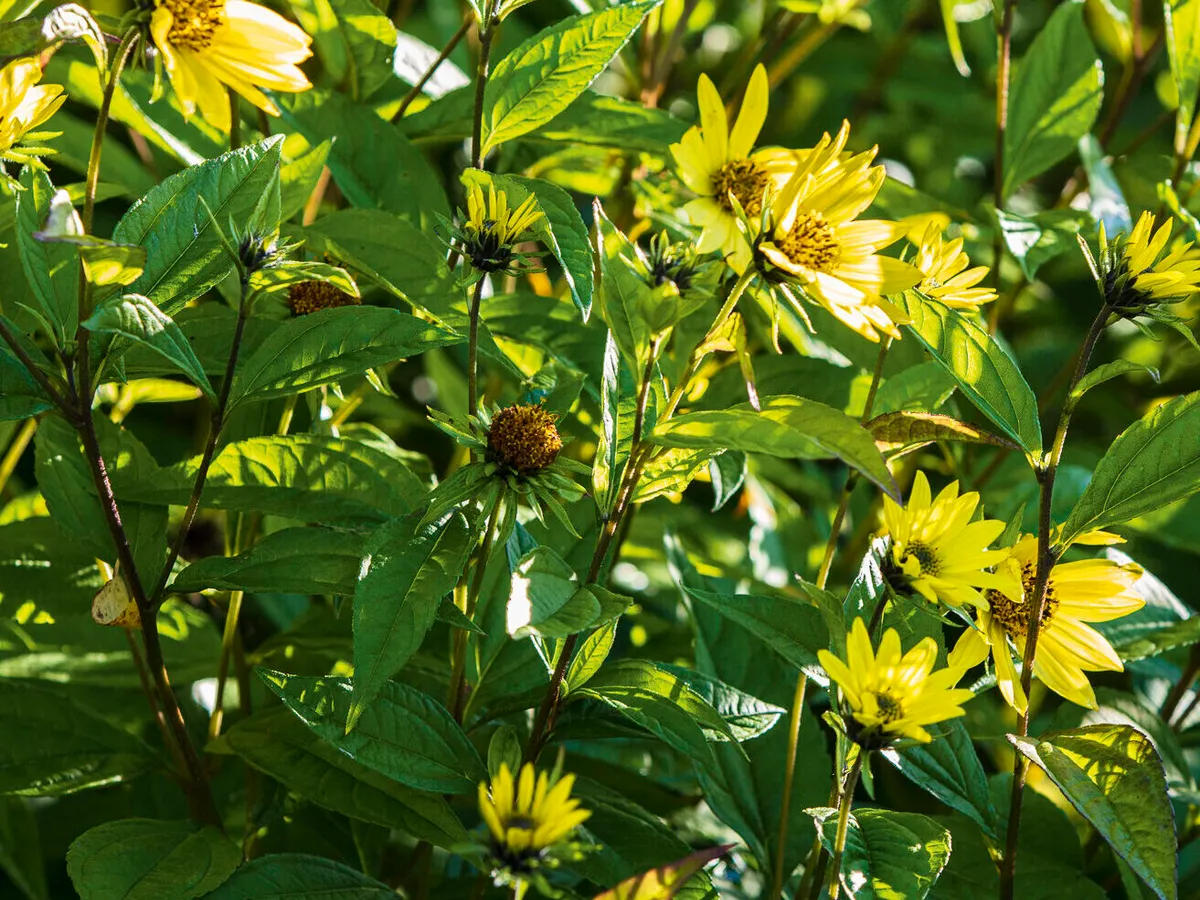
Provides months of softly coloured flowers on robust stems, forming a big clump that is very useful at the back of a border. 1.5-1.8m. AGM. RHS H4.
Vitis vinifera ‘Purpurea’
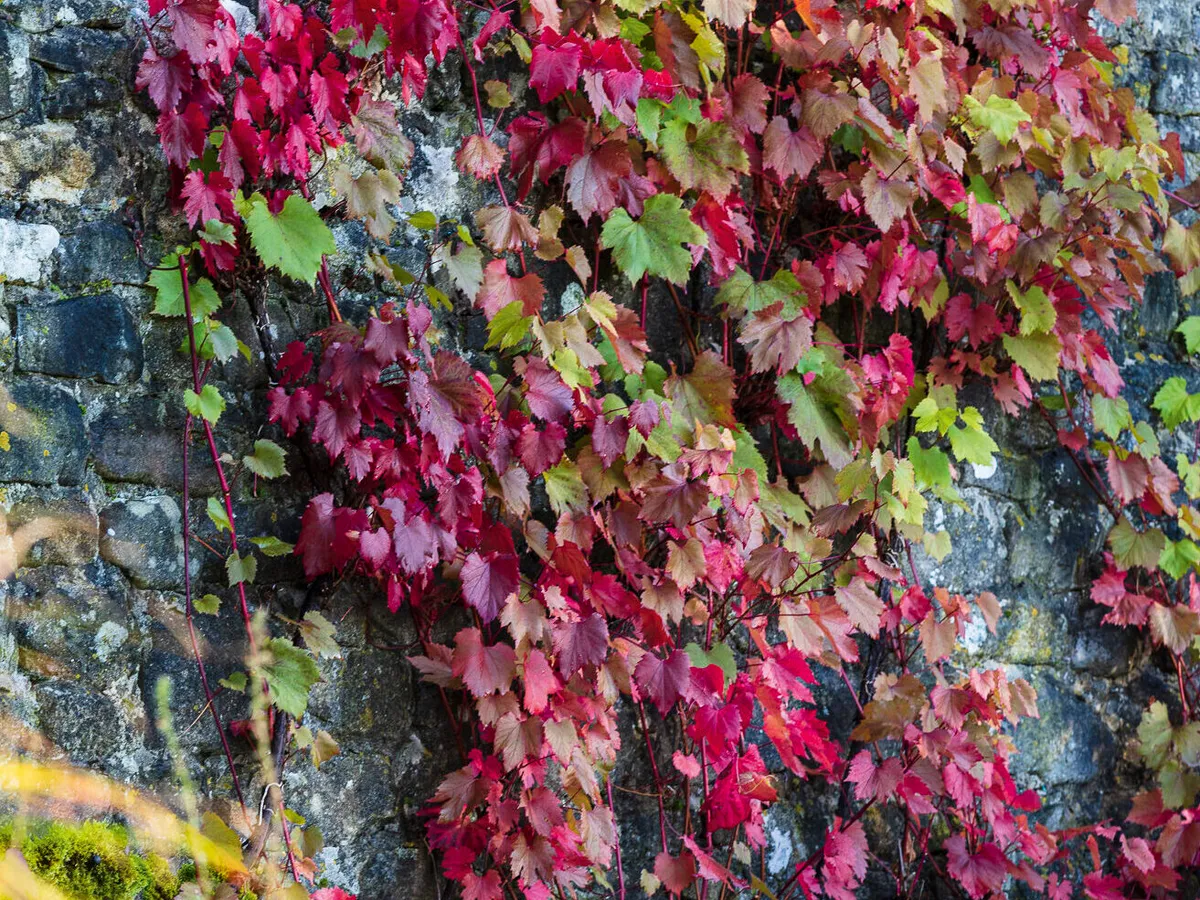
Hardy vine, with white, hairy new growth turning to purplish leaves, whose colour becomes richer in autumn. Grown for its foliage rather than any grape harvest. 5m. AGM. RHS H5.
Polypodium x mantoniae ‘Cornubiense’
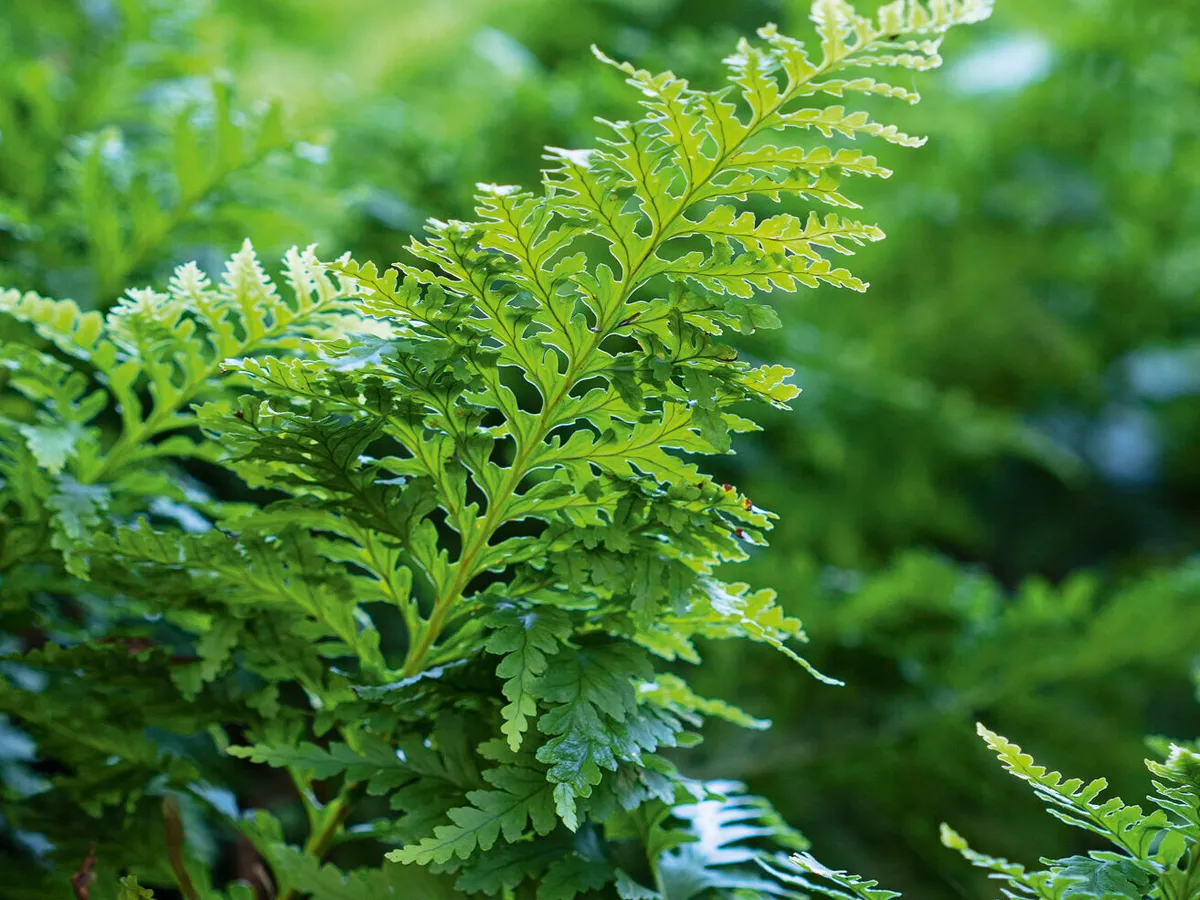
An excellent, winter-green fern for groundcover in well-drained places, making a dense mass of finely dissected fronds. 30cm. AGM. RHS H7.
Cornus alba ‘Elegantissima’

A multi-season dogwood, with white-edged, variegated leaves that turn purple-red in autumn. Red stems give winter interest. 1.5m. AGM. RHS H7, USDA 3a-7b.
Phytolacca americana

Known as pokeweed, this perennial has long spikes of white-pink flowers, followed by shiny, black berries held on reddish stems. 1.2-1.5m. RHS H7, USDA 4a-8b.
*Holds an Award of Garden Merit from the Royal Horticultural Society. †Hardiness ratings given where available.